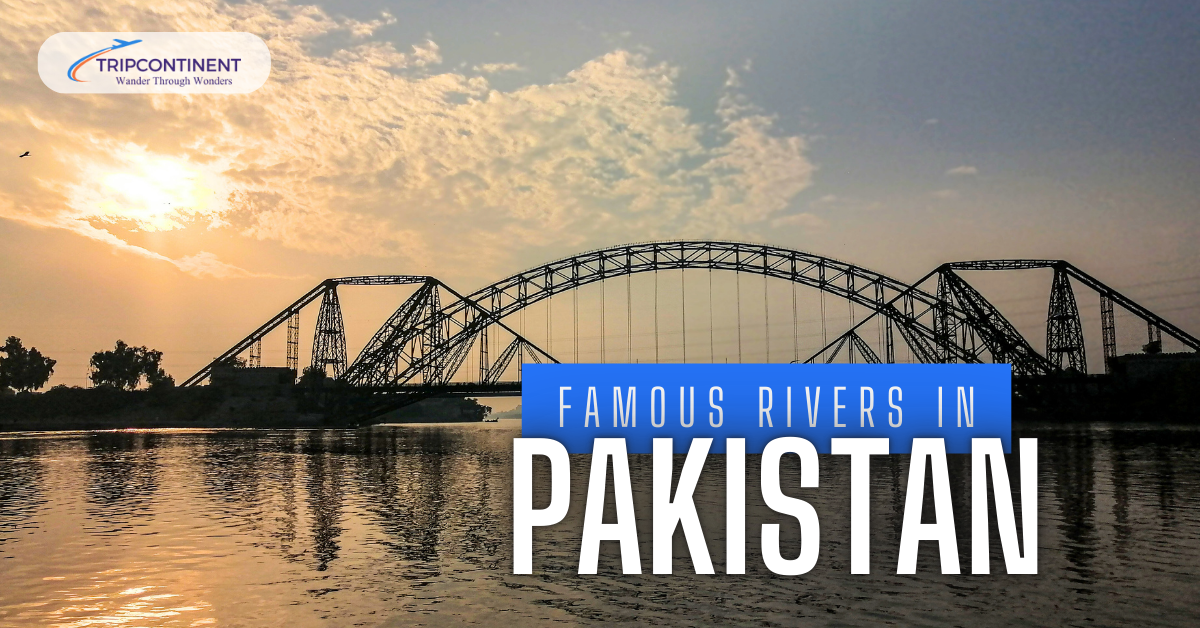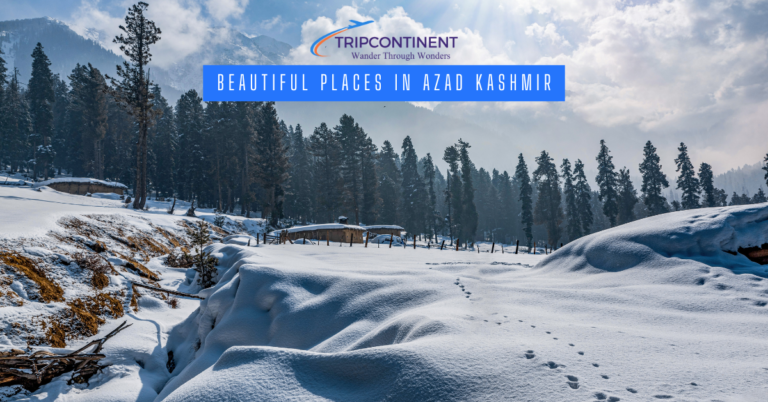Which Are The 6 Famous Rivers In Pakistan?
A river is a natural stream of water that flows in a channel with more or less defined banks. They play an important role in shaping the Earth’s surface, the country’s economy, and the way of life. The rivers of Pakistan are organized geographically by river basins, from west to east. Where the Indus River serves as the country’s life force, other rivers including the Jhelum, Ravi, Chenab, Satluj, and Kabul promote nature and have been important for Pakistan. In this article, we’ll delve into details to discover the history, importance, and beauty of the 6 Pakistani waterways.
List of the Top 6 Rivers of Pakistan
1. Indus River
2. Jhelum River
3. Chenab River
4. Sutlej River
5. Ravi River
6. Kabul River
1. Indus River
The Indus is known as a transboundary river in Asia, as well as a trans-Himalayan river in South and Central Asia. The word “Indus” has Sanskrit origins, initially named Indu or Hindu. The river passes through China (western Tibet), India (Ladakh), and Pakistan. While spanning an area of 3,120 km, it is renowned as the largest river of Pakistan. The drainage area of the Indus river is 430,000 sq mi, out of which 175,000 square miles flow in the ranges and foothills of the Himalayas, the Karakoram, and the Hindu Kush range. Whereas the remaining lies in the semiarid plains of Pakistan.
The river’s annual flow is recorded at approximately 243 km3, which makes it one of the world’s largest rivers. Its cultural and ecological importance is immense and supports diverse life in its basin. This country’s national river flows through the entire length of Pakistan, providing water for irrigation and industry, and contributing as a major source of hydroelectric power. From breathtaking mountains to the vast plains, this incredible waterway flows streams through various landscapes, shaping the geography of Pakistan. The Indus River is not only economically important for the country but also contributes to the industries of Pakistan, such as tourism, power generation, and the agricultural sector.
Read Also: Seven Wonders of the World
2. Jhelum River
The Jhelum River was initially named as Vitasta. It is the river of northwestern India and northern and eastern Pakistan. Jhelum River constitutes the westernmost of Punjab’s five rivers that combine with the Indus River in eastern Pakistan. This river has a total length of about 774 kilometers (480 miles) and is the tributary of the Chenab River. It originates from the southeastern part of Kashmir valley and streams down through Srinagar before entering into Pakistan.
Jhelum River is joined by the largest tributary Neelum River near Muzaffarabad. This one of the largest rivers of Pakistan plays a crucial role in the region’s irrigation by boasting several barrages and dams. Mangla Dam, an earth-fill dam is considered the largest dam in Pakistan, constructed in 1967 on Jhelum River with a storage capacity of nearly 5.9 million acre-feet. Other Barrages which are covered by the Jhelum River, are known as Rasul Barrage, and Trimmu Barrage, enhancing their importance for water management. These structures contribute a significant role for water regulation, and promote the sustainability of the surrounding areas. Jhelum River is more than just a waterway, it has become a lifeline for those who utilize its resources for their livelihood. From Kashmir to various regions, it shapes the landscapes and sustains the communities, thriving alongside it.
3. Chenab River
Chenab River, one of the major rivers of Punjab, is formed by the union of two streams, Chandra and Bhaga at Tandi. It is the river of the Indian subcontinent in northwestern India and northeastern and eastern Pakistan. While receiving the Jhelum River near Trimmu, a flood control mechanism near Jhang, this river emerges with the Sutlej River near Uch Sharif, forming the “Punjnad” or “The Five Rivers.” With a total length of 960 kilometers, the Chenab River stands out as Pakistan’s second-longest river.
The river’s basin is home to a large number of people, including some of the poorest in Pakistan. The Chenab River serves for the maintenance of various irrigation canals by providing water, thus contributing to the region’s agriculture. It supports a thriving fishing industry, also used as an important route for trade and travel for centuries. The split waterway between India and Pakistan is famous as a lifeline for communities it passes by, fulfilling their farming needs, while connecting them to a larger network of rivers.
Read Also: Most Beautiful Places in KPK
4. Sutlej River
Sutlej River is one of the longest of the five major rivers that flow through the Punjab region. The river was previously known as “Shutudri” or “Sutudri.” Located in northern India and Pakistan, Sutlej is a transboundary river. It originates from Lake Rakshastal in Tibet near Mount Kailash, at an elevation above 15,000 feet. Before entering into Pakistan, it receives the Beas River and forms 65 miles of the India-Pakistan border, then flows 220 miles to join the Chenab River, west of the Bahawalpur. The journey of the Sutlej River through this region upholds historical significance, whereas its water contributes to the livelihoods of people in both countries.
Sutlej River is the easternmost branch of the Indus River.
The river’s hydrology is maintained by spring and summer snowmelt in the Himalayas and by the South Asian monsoon. With a length of 1,400 kilometers, the Sutlej River is extensively used for irrigation. This Red River has played an important role between Pakistan and India, guided by the Indus Water Treaty since the 1960s. The unique blend of the river’s beauty and adherence to national agreements make it an integral part of the landscape while showcasing the coexistence of nations in the shared flow of this waterway.
The river has earned its significance in Pakistan for hydroelectricity generation. It accounts for more than one hydropower project in the country, which includes the 1,325 MW Bhakra Dam, the 1,000 MW Karcham Wangtoo Hydroelectric Plant, and the 1,500 MW Nathpa Jhakri Dam.
5. Ravi River
Situated in northwestern India and eastern Pakistan, the Ravi River is one of the six rivers of the Indus System in Punjab. It was previously known as Iravati. This river originates from the Himalayas and flows southwest into Pakistan while joining the Chenab. The river’s water was allocated to India under the Indus Water Treaty. Ravi River is renowned as the headwater of the Indus Basin, as well as one of the important parts of the River Basin. Through the Indus River of Pakistan, the Ravi River’s water merges with the Arabian Sea (Indian Ocean).
Ravi River is also called “The River of Lahore” since the Lahore city is located at its eastern bank. The total length of the river was estimated at 720 kilometers. Its hydrology is controlled by spring snowmelt and the monsoon season of South Asia, during which heavy rainfall occurs from June to September. In the summer monsoon season, the flood discharges over 17,000 cubic meters per second, whereas the flow is substantially reduced during the winter season. The river’s water is used for irrigating large areas of land along its course.
6. Kabul River
The Kabul River is considered as the main river in eastern Afghanistan, and in the KPK, province of Pakistan. The river emerges in the Sanglakh Range of the Hindu Kush mountains, located in the northeastern part of Maidan Wardak Province, Afghanistan. This Pakistani river is a tributary of the Indus River. Its water stream is propelled by the glaciers of Chitral, which passes through Peshawar, Charsadda, and Nowshera.
While bridging culture and environments, this waterway influences the area it flows by, while promoting local life and sustaining the ecosystem from Afghanistan to Pakistan. Kabul River represents a unique relationship that exists between nature and human existence in the several terrains it traverses.
Read Also: Historical Places in Pakistan
Conclusion
Pakistan is home to some of the world’s famous rivers. These rivers carve through landscapes and play a crucial role in shaping the geography, economy, and overall betterment of the country. From the largest Indus River to the Chenab, Sutlej, and Kabul, each waterway is the nation’s heartbeat. Pakistani rivers may vary in size and are a fundamental link in the hydrological cycle. These majestic rivers represent a unique beauty and charm while fostering a delicate balance between nature and human existence.
FAQ’s
What are the interesting facts about the rivers of Pakistan?
The Indus River is the largest river in Pakistan, which originated from the Himalayan region. This Pakistani river got its 21st position among the world’s largest rivers in terms of annual water flow.
What is the most beautiful river in Pakistan?
The Indus River is considered the most beautiful among Pakistani rivers. While going through the stunning places, the Indus River is like the country’s life force.
Which river is deepest in Pakistan?
The Chenab River is famous as the deepest river in Pakistan, as it courses through several terrains, carved deep valleys, and gorges.
What are the other rivers of Pakistan?
Other popular rivers of Pakistan include Kunhar River, Swat river, Gilgit river, Neelum River, Kurran River, Hingol River, Dasht River, Gomal River and Soan.

I’m Sophia Jones, an adventurer at heart from New York City, USA. I live for travel and exploration, always eager to discover new places, meet fascinating people, and try out diverse cuisines. Over the past few years, I’ve traveled to numerous countries, immersing myself in different cultures and creating unforgettable memories.





